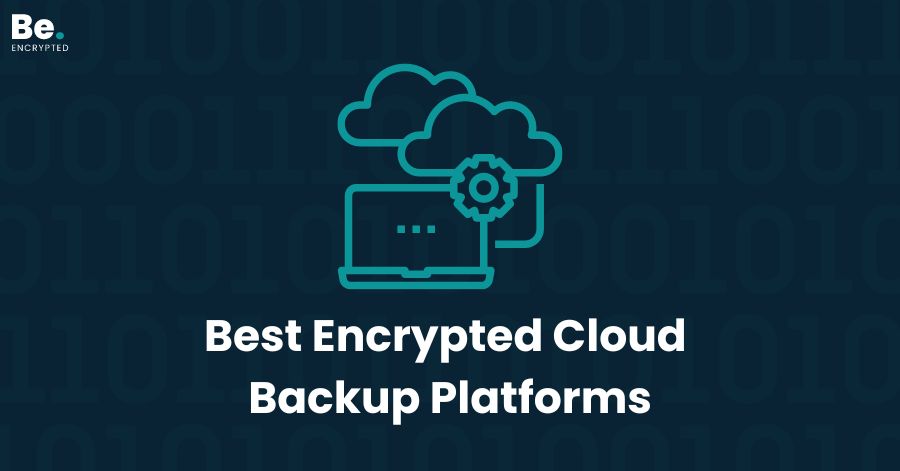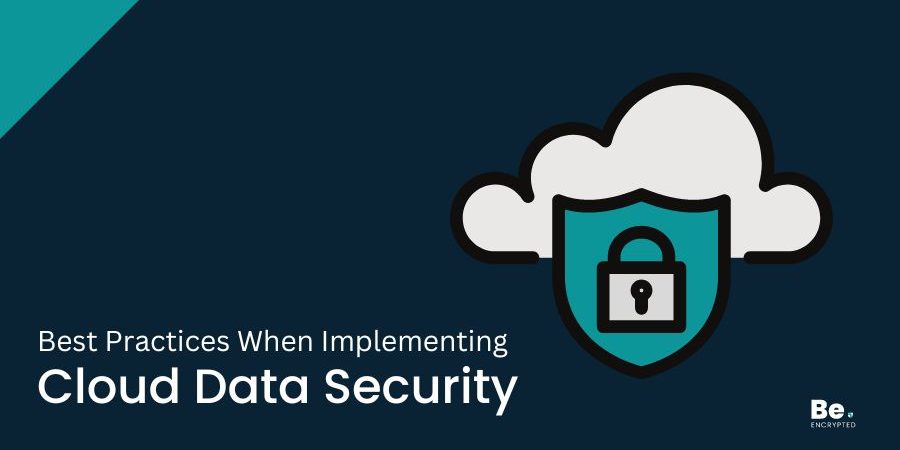Businesses are using the cloud to store data and run daily operations more than ever. There’s much to be said in favor of the cloud. The infrastructure is cost-effective, scales easily as a business grows, and companies do not have to invest in non-core resources.
However, outsourcing infrastructure to a cloud service provider brings security concerns. Cloud data security and protection is challenging to ensure at the best of times. How can companies ensure their data is always secure and not vulnerable to exploitation?
Here are four best practices to follow to ensure optimal cloud data security.
Leverage Encryption
Encryption must be a standard practice in every organization’s cybersecurity posture. Encryption renders sensitive data unreadable to unauthorized users. Typically companies focus on encrypting data at rest. For instance, when data is viewed by an unauthorized entity, encryption modules scramble or mask data.
However, data is vulnerable when transiting from one system to another. Encryption in transit is essential, as malicious actors can target such data movement to compromise a system. Cloud service providers typically offer at-rest encryption. Companies must use encrypted HTTPS/TLS connections to ensure connections to cloud infrastructure are secure and in-transit data is encrypted.
Companies must also ensure they own all encryption keys to their data. Smaller organizations can rely on service provider secrets management. However, large companies with compliance needs must implement hardware security module (HSM) key management services, in addition to third party key management services.
For instance, large companies can use a combination of the HSM and third party key to access data. Another option is to use a private key that unlocks data when combined with the previous keys.
Install Robust Security Governance
Security infrastructure is essential, but all resources are for naught if the right standards do not back them. These days, companies have regulatory guidelines about cloud storage they must comply with. Data governance and security policies ensure infrastructure always complies with regulations.
For instance, implementing Zero Trust (ZT) protocols in identity management is critical. Many companies issue credentials with long expiry dates, without considering the harm an unused credential might create. Malicious actors routinely use unused or expired credentials to access systems, something recently witnessed in the high-profile breaches Uber, Fast Company, and Rockstar Games suffered.
Security governance tools help security admins figure out their security posture always. They also enforce ZT protocols such as agile security team creation and just-in-time credential access. The best way of ensuring good governance is to involve all stakeholders in a company and review guidelines periodically.
This process will ensure companies do not introduce configuration errors and other blind spots into their security postures.
Integrate IAM Tools Within The Security Stack
ZT is a powerful philosophy and must be the pillar of a company’s identity access management (IAM) program. These days companies can choose from several tools to solve their IAM issues. They can automate access grants, monitor usage patterns, and execute kill chains immediately.
A good IAM program is a combination of the right tools and governance. Typically, organizations that suffer breaches implement just one of the two, leading to a poor security framework. Worse, IAM tools tend to sit separately from the rest of a company’s security stack, leading to data silos.
Cybersecurity is a diverse field, and enterprises use several best-in-class solutions when designing security architecture. Companies must ensure they use a tool that centralizes all security alerts and actions, instead of checking in with different tools all the time. This process applies to IAM tools too.
Use Data Loss Prevention Tools
Every security breach results in data loss. Surprisingly, numerous large organizations still resist using data loss protection (DLP) tools. With the large amount of data stored in the cloud, companies must leverage cloud DLP tools.
While most cybersecurity tools focus on preventing attackers from accessing data, DLP tools assume a breach is in process and make it difficult for an attacker to leak or misuse sensitive data. Think of DLP as one of the company’s last lines of defense against unauthorized breaches.
Cloud DLP solutions are a great tool to integrate within a broad ZT security approach. They validate access and ensure encryption at all times. In addition, any abnormal activity is flagged immediately, making it difficult for sensitive data to leave company cloud servers.
A good way to supercharge a DLP solution is to combine it with a cloud workload protection system that monitors all container activities. Whether monitoring Kubernetes or serverless functions, the combination of DLP and cloud workload protection ensures minimal data leaks, even during a breach.
Security Is Changing Quickly
Cybersecurity is an ever-evolving field, and companies must examine and design robust architecture to keep pace with the times. The tips in this article will help companies always ensure optimal cloud security and data protection.
Share this article
About the Author
Waqas is a cybersecurity journalist and writer who has a knack for writing technology and online privacy-focused articles. He strives to help achieve a secure online environment and is skilled in writing topics related to cybersecurity, AI, DevOps, Cloud security, and a lot more. As seen in: Computer.org, Nordic APIs, Infosecinstitute.com, Tripwire.com, and VentureBeat.
More from Iam WaqasRelated Posts

12 Best Encrypted Cloud Backup Services To Consider In 2024
KEY TAKEAWAYS Cloud storage services offer an easy and convenient way to store and protect your cruc...


